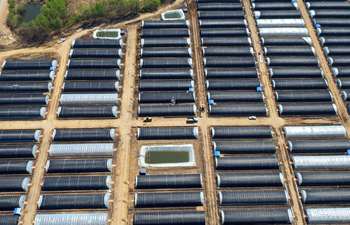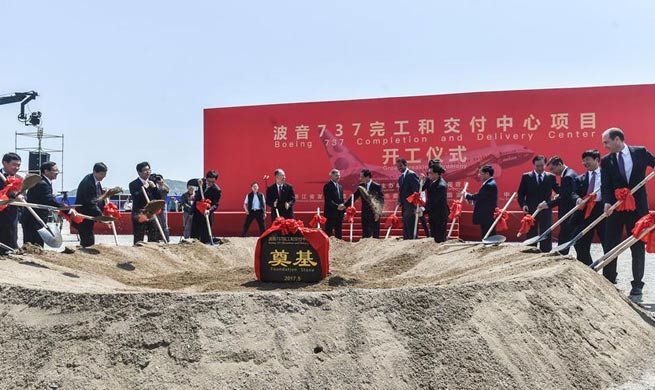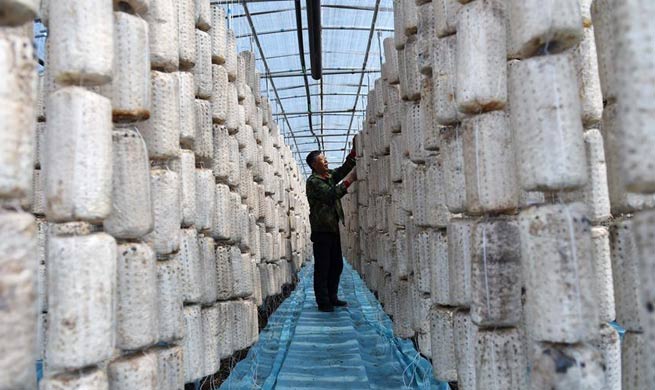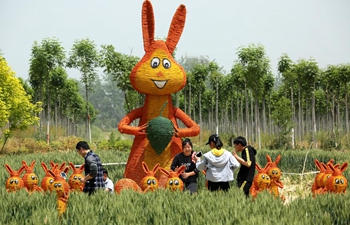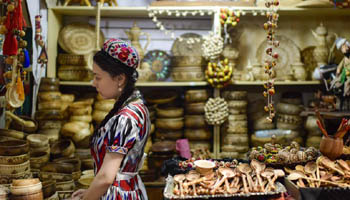NAIROBI, May 11 (Xinhua) -- Kenya's tea production dropped by 30 percent over the past nine months as a result of drought and prices are likely to increase this year, tea regulators said on Thursday.
Kenya Tea Development Agency (KTDA) Chief Executive Lerionka Tiampati said green leaf deliveries by farmers dropped to 705.2 million kilograms in the nine months to March compared to 936.6 million kg in 2016.
"The sharp drop in green leaf production is a result of the acute and prolonged dry spell," Tiampati told Xinhua on the sidelines of a regional meeting of tea producers at the Third Africa Tea Convention and Exhibition in Nairobi.
The Director-General of the Agriculture and Food Authority (AFA) Alfred Busolo said the tea industry is likely to suffer from the effects of the prolonged drought but earnings will stabilize and possibly increase.
The main producers and buyers of the Kenyan tea are meeting in Nairobi to discuss industry issues including how to stabilize the production of the commodity.
They are also meeting to discuss factors affecting the industry, including the shrinking acreage of land under cultivation.
"Key focus by stakeholders is to look again at the value chain in terms of ensuring even during the high production periods we have more buyers at the tea auction, Mombasa. Further invest in warehousing facilities to provide availability of tea, to the buyers," Busolo said.
The drop in tea production in Kenya, one of the world's biggest producers of the commodity, is likely to be compensated by high prices at the Mombasa Tea Auction.
However, prices at the auction have remained low, according to the KTDA officials. Prices at the Mombasa Tea Auction have been lower at an average 2.5 U.S. dollars per kilogram in the nine months to March. This compares poorly to the 2.74 dollars average for a similar period last year. Tea sales generated income amounting to 840 million U.S. dollars in 2016.
There are at least 560,000 smallholder tea farmers in Kenya, according to the KTDA, which operates 67 factories, which is responsible for 60 percent of the annual tea production in Kenya's tea production and exports.
The remaining 40 percent of the tea is produced mainly by multinationals in Kericho in western Kenya and in Kiambu in central Kenya and Nandi in the Rift Valley region in western Kenya.
Tea production suffered its biggest drop in the month of February, according to Tiampata.
He said the green leaf delivered by farmers dropping 52 per cent to 54.3 million kilograms compared to 114 million kilograms in February 2016.
In March, the tea production dropped by 35.8 percent to 77.9 million kilograms, according to the KTDA.
Factories managed by KTDA are currently operating below average following a sharp drop in the amount of green leaf delivered by farmers, with the worst hit areas being Kirinyaga, Nyeri and Embu counties.
Tiampati stated that new strategies are needed to enhance the crop productivity as land for expansion faces threat from the surging population and real estate.
Meanwhile, Kenya plans to enhance tea research and development to provide new yielding varieties in order to contribute to high quality tea.






